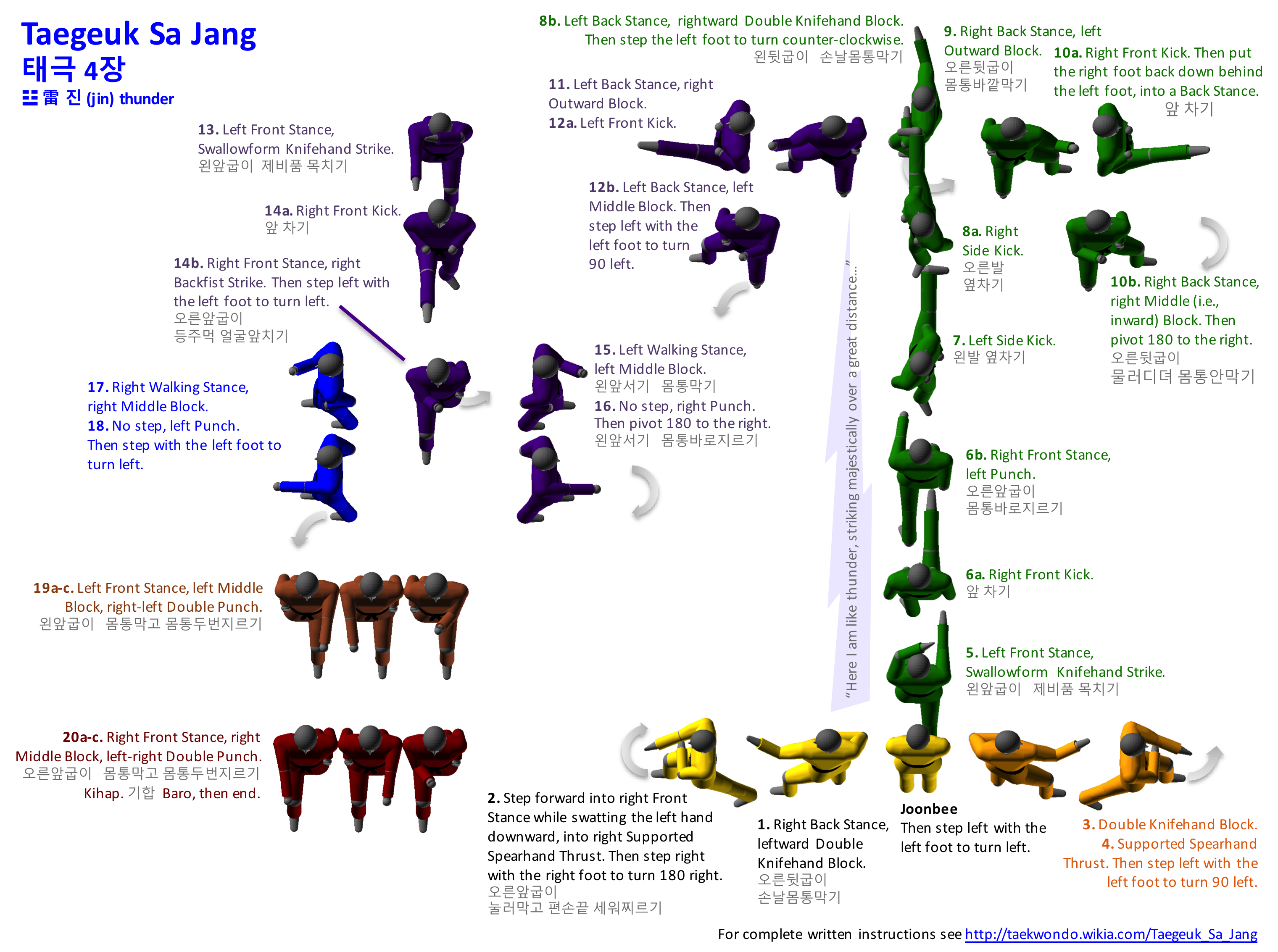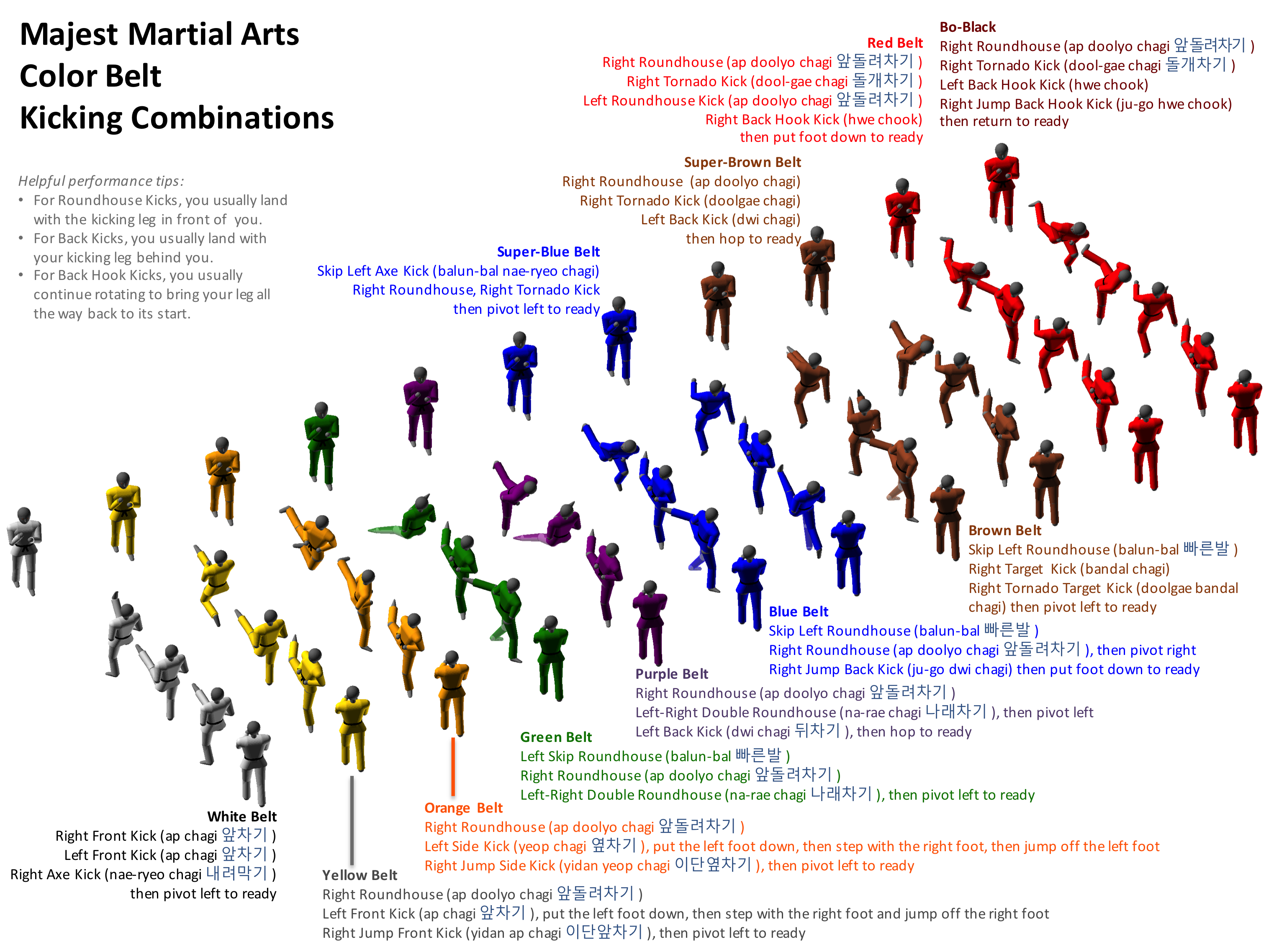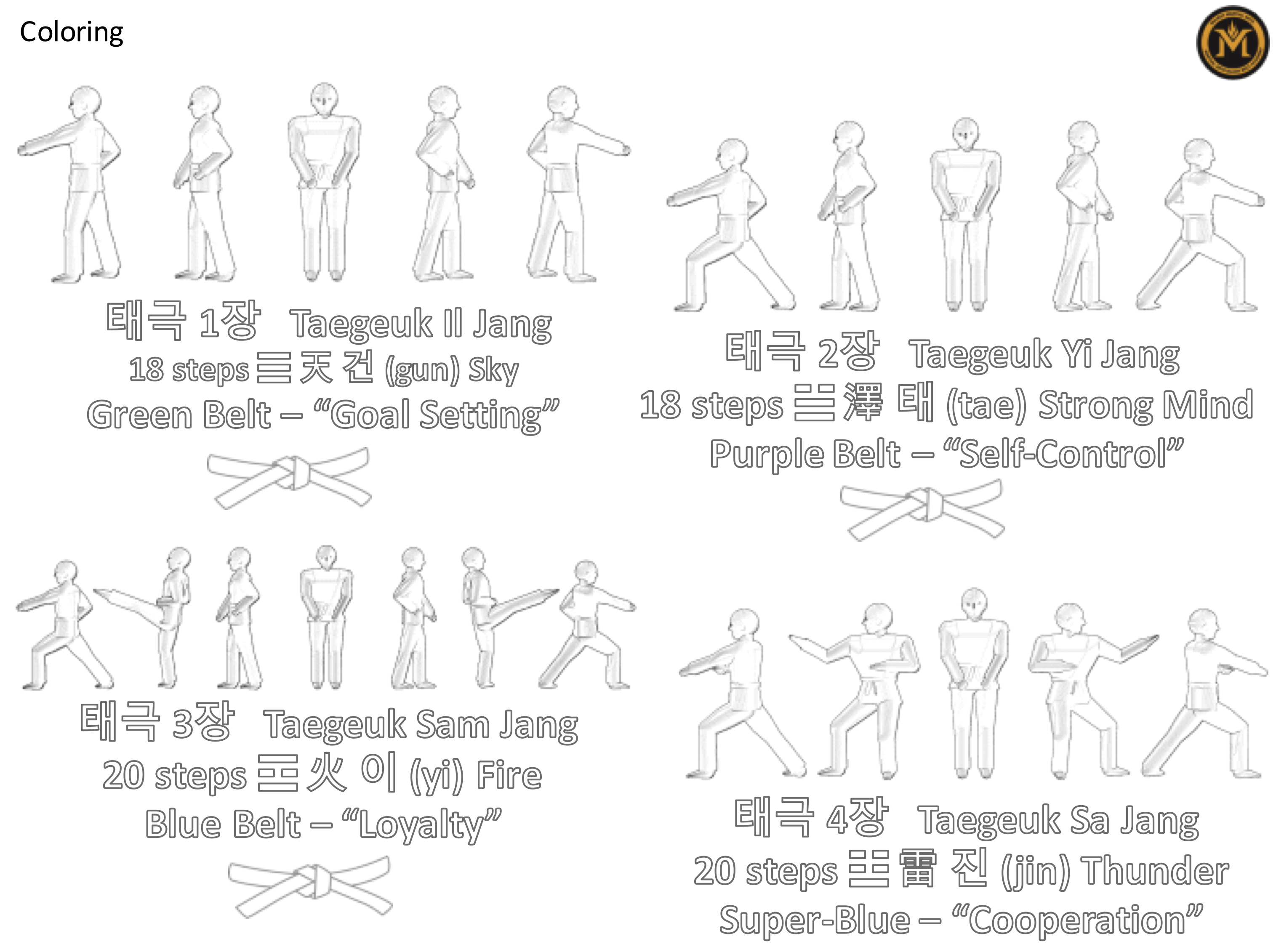Super Blue Belt Curriculum
Majest Martial ArtsAt Super-Blue Belt (4th gup), Majest students study Taegeuk Sa Jang, the fourth form in the Taegeuk series. The I Ching triagram for this poomsae (☳) symbolizes thunder – great power and dignity. Steps 5-9 are reminiscent of thunder: a sudden crash (the block-kick-punch combination) that rumbles over a long distance (the two successive side kicks) before fading to the outward block at the end. Step 9 is particularly challenging as the student should chamber for the Double Knifehand Block while still in motion from the Side Kick, so that the block can conclude as the student lands into Back Stance.
The fact that the final two lines of the trigram (☳) are broken lines indicates that the final two major turns of the form are pivots-in-place (as opposed to lead-foot turns). Read more about this poomsae — including step-by-step instructions — at: Taegeuk Sa Jang.
4th gup - Super-Blue Belt, Taegeuk Sa Jang (step by step)
4th gup - Super-Blue Belt, Taegeuk Sa Jang (with written instructions)
4th gup - Super-Blue Belt, Taegeuk Sa Jang
4th gup - Super-Blue Belt breaking
4th gup - Super-Blue Belt kicking combination
The Super-Blue Belt kicking combination Skip Axe Kick with the left leg, followed by a Roundhouse Kick with the right leg and a Tornado Kick with the right leg.
4th gup - How Parents Can Help
As you help you child practice this poomsae at home, here are some things to keep an eye on:
- Often the most difficult part for students in this form is steps 15-20. Specifically, students have difficulty remembering which hand blocks, and which hand punches. The blocks and punches follow a “turn signal” rule. At the end of step 14b, the student will be pivoting leftward, so the left hand should go up to chamber for an Inside Middle Block — almost as if the student is signaling a left turn. Then the same rule applies again at the end of step 16: the student will be pivoting rightward, so the right hand should up to chamber for an Inside Middle Block as if the student is signaling a right turn. Then finally, this repeats again at the end of Step 18 when the student turns left: the left hand signals for the turn.
- This next item is challenging, but it’s something that can be practiced at home: after the Side Kick at step 8a, the student should chamber for the Double Knifehand Block before landing into the Back Stance. In other words the student extends the leg to kick, retracts the leg while staying balanced on one leg, chambers for the block, and then lands into Back Stance and blocks simultaneously.
- Keep any eye out for and correct any of these “bad habits” when practicing poomsae at home:
- “Extra Steps” — when a student is stepping in a poomsae, the lead foot should remain planted, then the rear foot should step forward — this is always true: during steps, during turns, during kicks, etc. Some students will develop the habit of slightly shifting the lead foot first, before they step, then stepping. We call this an “extra step”. A more correct performance has no “extra steps”.
- “Lifted Heel” — after a student has taken a step, the heels of both feet should be touching the ground. Some students have a tendency have the heel of the rear foot lifted off the ground.
- “Bobbing” — as a student takes a step, the height of their body should remain level throughout the motion. Some students develop a tendency to bob up-and-down as they step forward. Keeping a level body-height requires strong leg muscles.
Just for Fun
Print and color!











